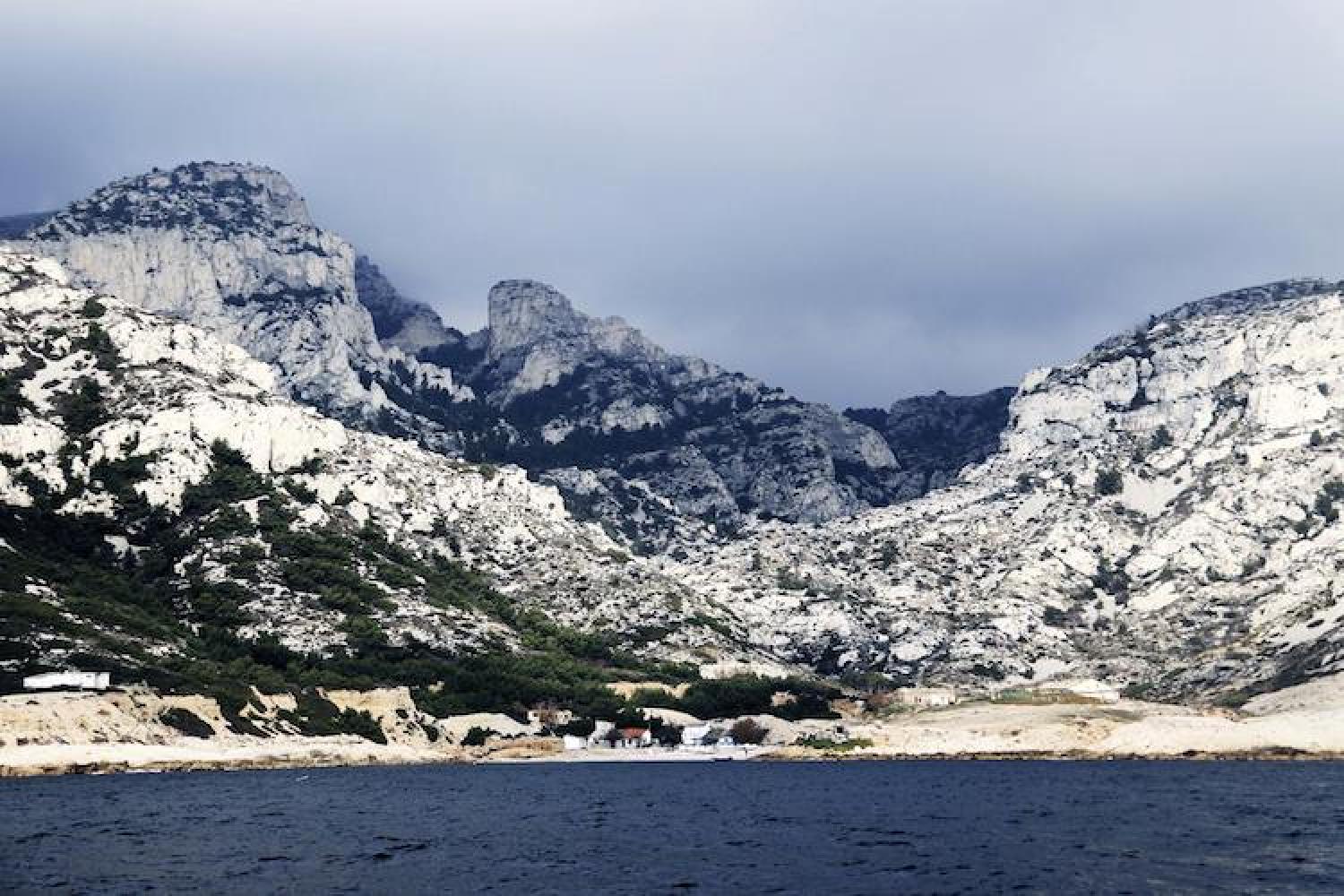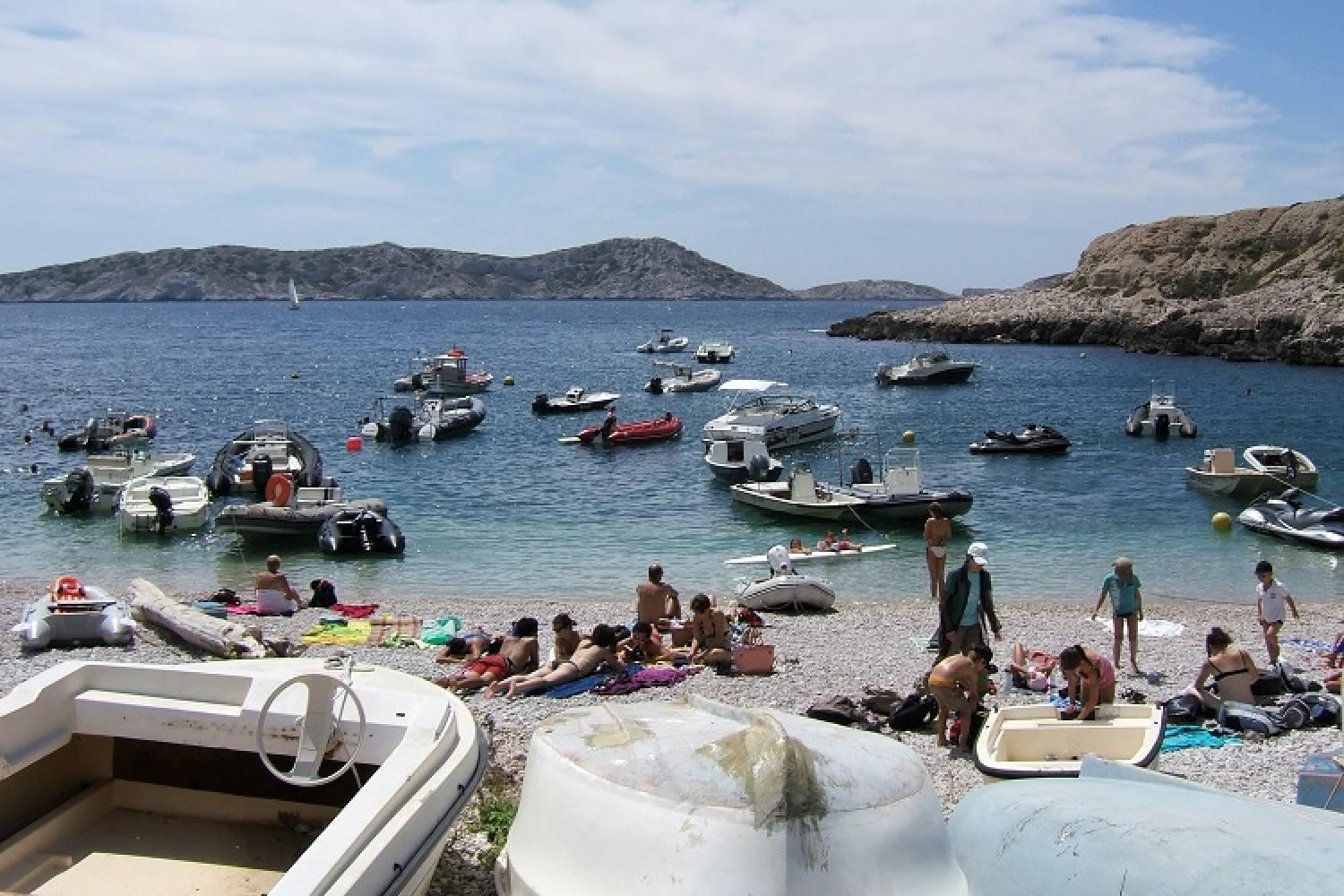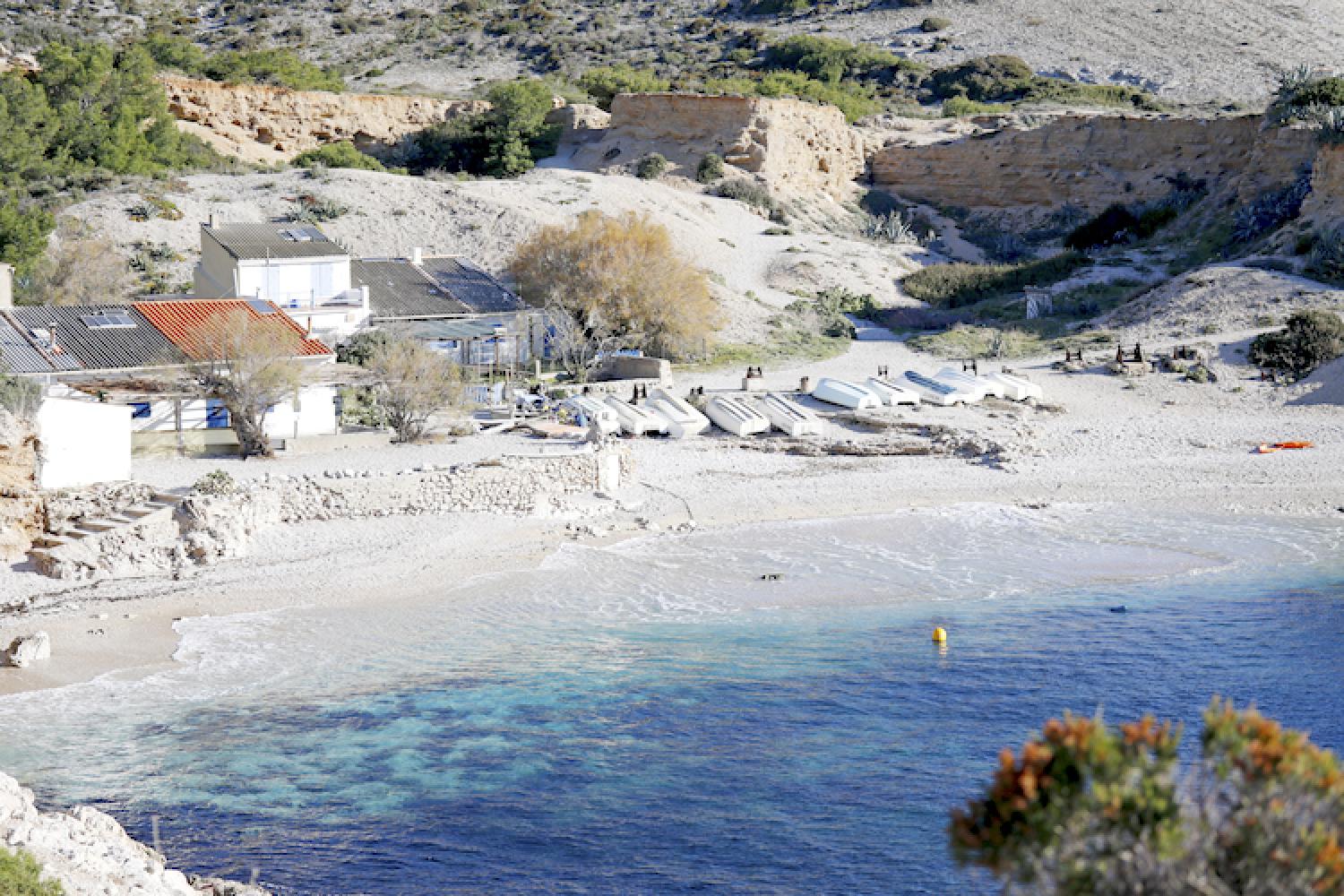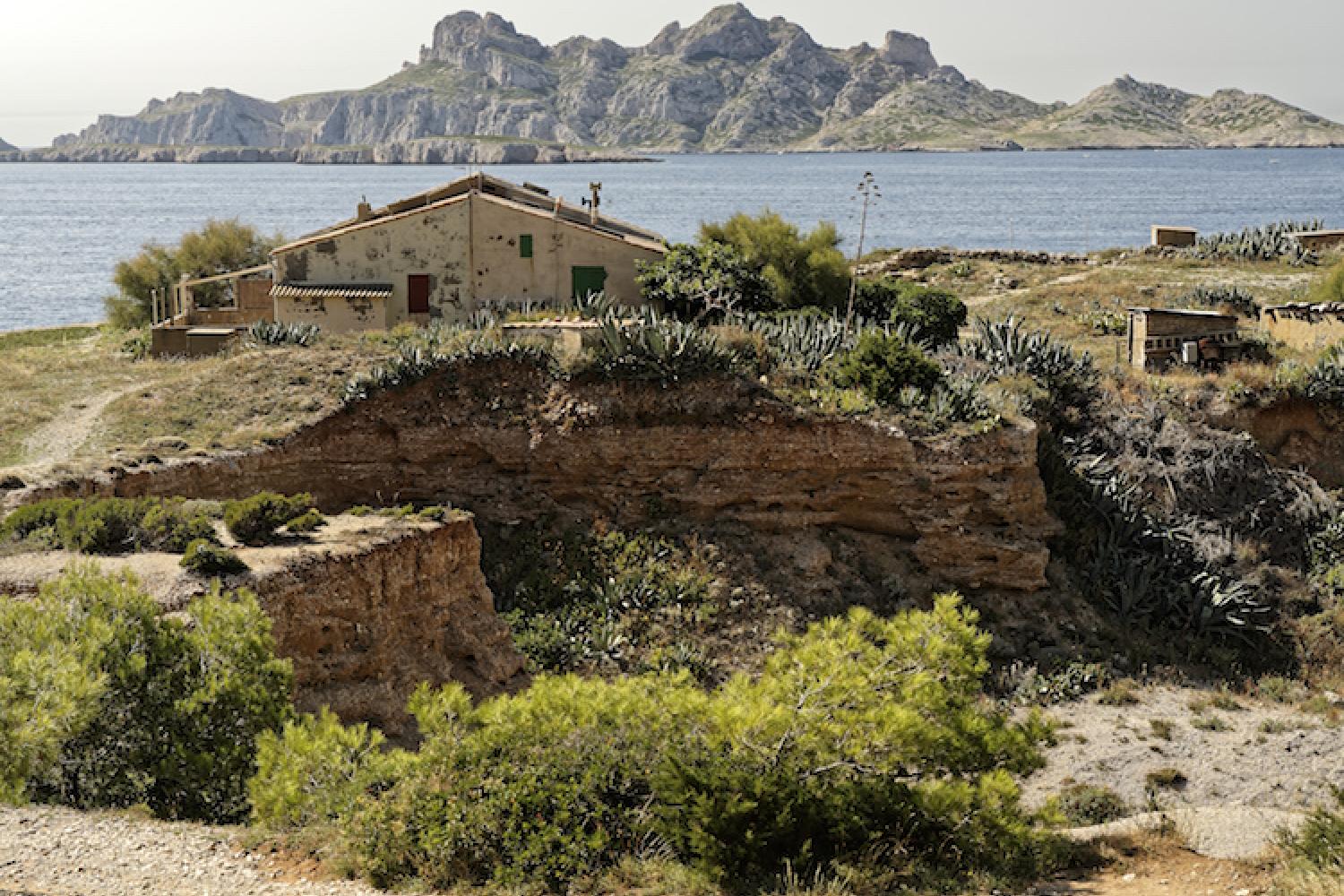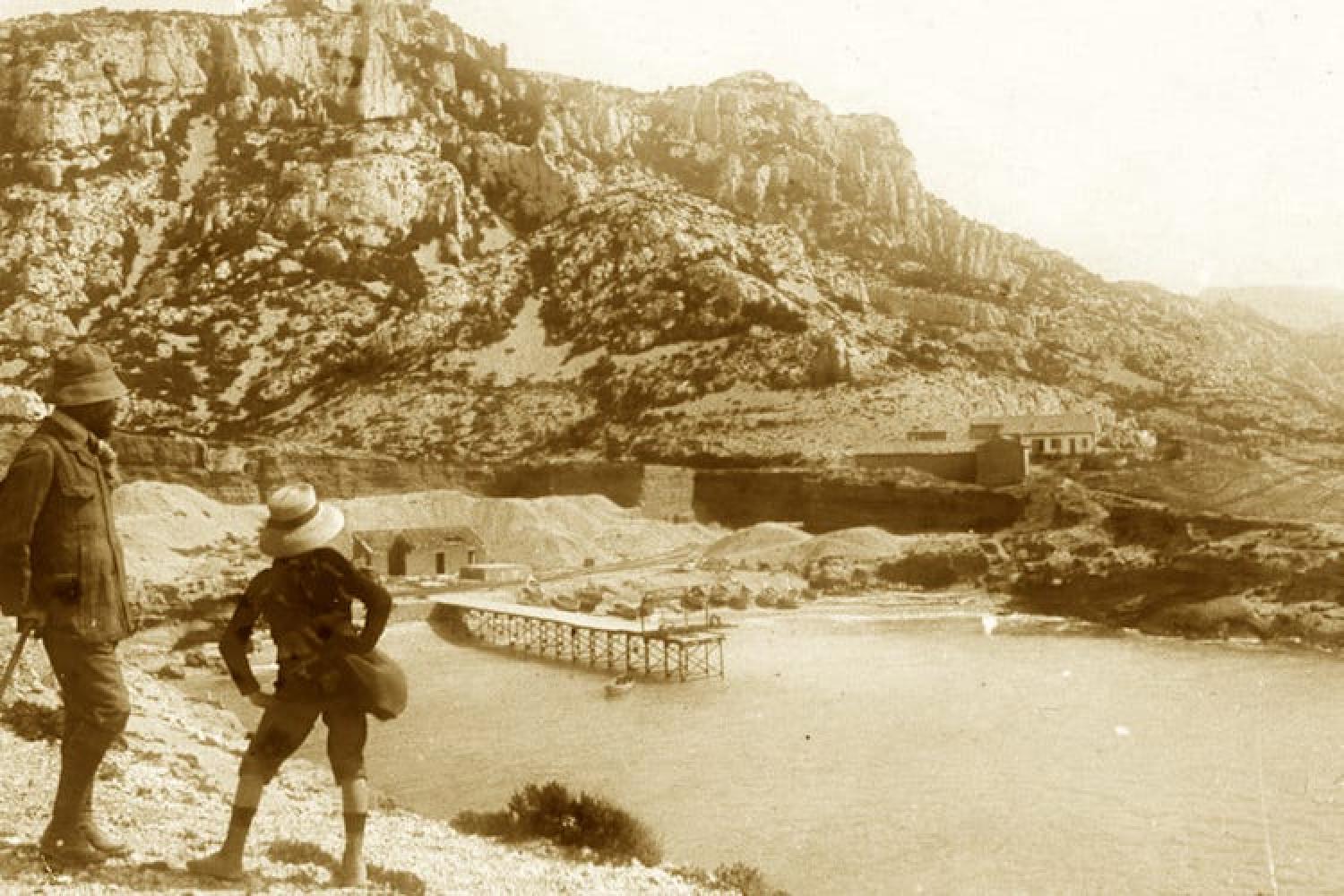Sand and cabins
A sandy calanque
The sand is what makes Marseilleveyre calanque unique. Careful observation of the small cliffs on the beach reveal alternating layers: some with a mix of angular stones and often flattened in a sandy matrix, others just sand.
Marseilleveyre sable is "aeolien": violent southern winds whip the sand off surrounding coasts to deposit it here. The stones in the sand are "frost weathered" which means they are created by cracks in the rock due to cold temperatures. They are proof of the severe climate here over 20 thousand years ago.
A working-class calanque
The sand in Marseilleveyre was a precious resource in the 19th century. The landscape bears marks of past industrial activity. The cliffs are in fact vestiges of a quarry. The first Marseilleveyre cabanons or cabins were built to house quarry workers. And the Marseilleveyre sand was used to build roads in Marseille.
And a military calanque
Like many other sites in the Calanques National Park, there are ruins of two military batteries in the calanques. On either side of the calanque, they guarded access to the valley which was a natural passage inland that reach the sea via the Marseilleveyre calanque. They were two sections of the Südwall, or the Mediterranean wall, built by the Germans to look out for the possible arrival of allied forces in Provence, which indeed took place from 15 August 1944.
The end of the world
Marseilleveyre is the only inhabited calanques not accessible by car. Supplies are brought in by boat! Like Sormiou, Marseilleveyre is not connected to the electricity supply and does not have running water.
The happy few who choose to walk (which is quite a challenge) take the coastline trails after Les Goudes. They are dangerous, bathed in intense blinding light. The monotonous repetitive sound and shining foam of the backwash crashing over the rocks five, ten, or forty metres below are irresistible. The open sea is a horizontal abyss, just as vertiginous as any other."
Getting here and regulations
Before heading out to visit the Calanques National Park, make sure you are prepared and read here about good conduct and regulations.
The calanque and surrounding hills are open to visitors all year, except when closed due to fire danger. It is accessible via:
- the coastline on the GR 51-98 trail through the Mediterranean ranges
- the hillside trail which links the calanque to the top of the Marseilleveyre range via Le plan des Cailles and Le Grand Malvallon,
Marseilleveyre beach is overcrowded in summer. Read more information about beaches and swimming here.
Getting here
RTM bus no. 19 – direction Madrague de Montredon to the terminus, then 20 – direction Callelongue to the terminus, then walk for about 45 minutes.
In summer, RTM sea shuttles operate between Goudes Vieux-Port via La Pointe Rouge. Marseilleveyre calanque is a one-hour walk from Les Goudes or take RTM bus no.20 via Callelongue.
The coastline road south of Marseille is often congested, with severe traffic jams at peak hours and on the weekend, particularly in summer, and sometimes as far as La Pointe Rouge. Avoid travelling during peak hours and when possible, take public transport or cycle.
Localisation
GPS coordinates: 43.209842, 5.373185

